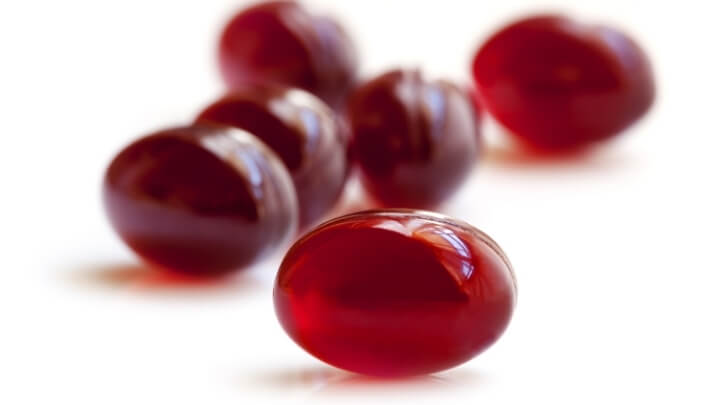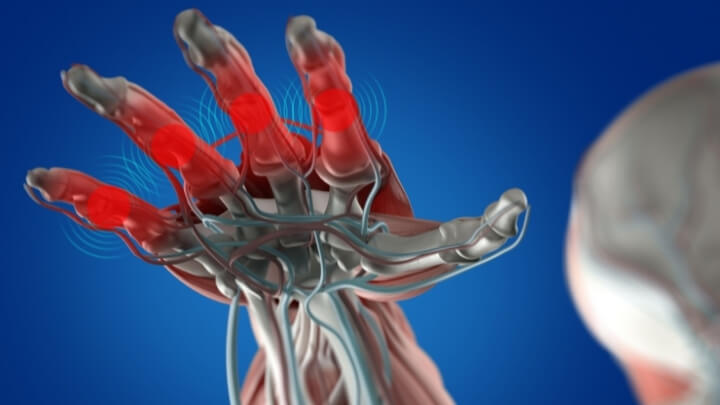Can Krill Oil Protect Against Rheumatoid Arthritis?
8 minute read
Approximately 1.5 million Americans have been diagnosed with rheumatoid arthritis. RA is more common in women, who are typically diagnosed between age 30-60, while men are usually diagnosed later. Although a family member with RA increases the chance of developing the condition, most people who have RA do not have a family history.
What is Rheumatoid Arthritis?
Arthritis comes in many forms, including the most common, osteoarthritis. Rheumatoid arthritis is an autoimmune disease. A rampant immune system attacks the body’s own joints, causing inflammation, thickening the lining inside the joints (synovium). This leads to swelling and pain in and around the joints. The synovium makes fluid to lubricate the joints for movement.
| Related: Managing Arthritis Pain With Turmeric Curcumin |
Inflammation caused by arthritis can cause damage to the cartilage in the bone ends of a joint, leading to cartilage loss. The space between joints decreases and joints loosen, becoming unstable and painful. Movement is more difficult. Joints can also become deformed.
The most common joints to be impacted by RA are in the hands, feet, wrists, elbows, knees, and ankles. RA is a systemic disease, which means it can affect the entire body, including the cardiovascular and respiratory system.

RA Medications
As there is no cure for RA, the treatment involves either managing the symptoms or inhibiting the progression of the condition. Medications include non-steroidal anti-inflammatory drugs (NSAIDs), immunosuppressive drugs to reduce the inflammatory response, and anti-inflammatory drugs such as sulfasalazine.
Steroid drugs such as prednisolone and cortisone either modify or stimulate hormonal effects to control the inflammatory response or encourage tissue repair. These are a synthetic version of cortisol, a hormone made by the adrenal glands.
A newer class of drugs, known as biologic agents or biologic response modifiers (DMARDs) work by targeted specific parts of the immune system that trigger the inflammatory response responsible for joint and tissue damage.
Medications used to treat RA may be effective in controlling symptoms and even slowing the progression but they don’t come without a price.
Potential Side Effects
NSAIDs: Edema, digestive upset, ulcers, potential increased risk of blood clots, heart attacks, stroke, and decreasing kidney function
Cortiocosteroids: Cataracts, elevated blood lipids and glucose, increased appetite, bone loss
Disease-modifying antirheumatic drugs (DMARDs): Digestive issues, less resistance to infection
Biologic agents: Redness and swelling at injection site, reactions to infusions (respiratory, nausea/vomiting, weakened pulse), increase risk of infections.

Self-Care
In addition to medication, certain self-care steps can be taken to complement the protocol prescribed by your physician. Some of these steps include:
Diet: Researchers and nutritionists suggest an anti-inflammatory diet rich in anti-oxidants may help control the chronic inflammation experienced in RA. A Mediterranean diet with fish, vegetables, fruits, and olive oil may be beneficial. Avoid processed food.
Maintain Weight: Controlling weight may lessen joint pain. Fat cells also inflammatory hormones that can impact RA. Unfortunately, certain medications for RA. such as corticosteroids may increases risk for weight gain by slowing down metabolism and altering fat storage, leading especially to abdominal weight gain. Exercise and following the anti-inflammatory diet may help control weight gain.
Exercise: Movement will help strengthen muscles and fatigue. Try walks, swimming, gentle water aerobics.
| Related: Powerful Qigong Exercises to Strengthen Arthritic Knees |
Tai Chi: This traditional movement therapy combines stretching with deep breathing. Some studies have demonstrated that practicing Tai Chi may reduce RA pain. Be sure to find a qualified and experienced teacher.
Heat and Cold: Applying heat such as a heating pad can reduce pain and relax muscles. Alternatively, cold may numb the sensation of pain, as well as decrease spasms.
Relaxation: Stress reduction may limit triggers to the inflammatory response. Try guided imagery or meditation to control pain.

Krill Oil
Krill oil is extracted from small crustaceans that live primarily in the Antarctic Ocean. Their diet consists of phytoplankton, which provides these creatures with their red hue and a powerful antioxidant, astaxanthin. This oil, primarily used as a supplement, is a rich source of omega-3 fatty acids DHA and EPA.
The fatty acids in krill oil are packaged in phospholipids, unlike fish oil, which packages the lipids in triglycerides. This makes krill oil more accessible to the body, as every membrane is made primarily of phospholipids.
Can Krill Oil Protect Against RA?
Studies of mice with a diet supplemented by krill oil showed reduced clinical signs of arthritis, such as decreased swelling in joints.
In one study, mice were divided into a control group, fish oil group, and a krill oil group. Mice in the fish oil and krill oil group were given the same amount of DHA and EPA/ On the 25th day and 47th day of the study, arthritis was induced in the mice. Researchers assessed the mice three times weekly beginning on day 47 through the last day of the experiment on day 68.
After looking at tissue samples and blood, researchers concluded that krill oil significantly inhibited the progression of arthritis compared to fish oil and the control group. The krill oil mice did not demonstrate any signs of arthritis until day 54, when 42.9 percent of the control group had arthritic symptoms, compared to 15.4 percent of the krill group.
The krill oil group also had less swelling, reduced cell growth in the joints, and fewer pro-inflammatory markers without immune system suppression experienced with some medications.
A second randomized, double blind placebo-controlled study showed that a daily dose of 300 mg of krill oil significantly reduces inflammation and arthritic symptoms after 7 to 14 days of treatment.
Krill oil reduces C-reactive protein activity, which is a marker of inflammation. In addition, the combination of hyaluronic acid and astaxanthin resulted in 55 percent reduction in pain in less than three months of administering and 63 percent were pain-free.
The Bonus of Astaxanthin
Studies show that antioxoxidant astaxanthin found in krill oil decreases C-reactive protein, which is a marker for inflammation. The liver and coronary arteries produce C-reactive protein, which is released in the bloodstream in response to inflammation.

The Bottom Line
Approximately 1.5 million Americans have been diagnosed with rheumatoid arthritis, an autoimmune disorder in which the body’s immune system attacks the joints, causing inflammation that causes swelling in the synovium, the tissue that lines the joints and tendons. This leads to pain and decreased mobility.
Without an available cure, RA patients rely on medications to manage symptoms and to inhibit the progression of the disorder. These medications, also effective, present numerous side effects, including weight gain, digestive issues, and compromised immune system response.
Research shows that krill oil can be an effective tool to reduce the inflammatory response and to relieve RA symptoms such as swelling and pain.












